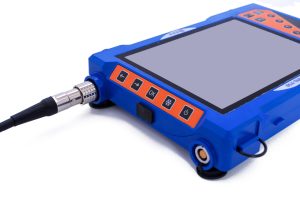Can BXL-V50 Veterinary Ultrasound Detect Different Animals with Different Probes
When it comes to veterinary diagnostics, ultrasound technology plays a crucial role in assessing the health of animals. The BXL-V50 veterinary ultrasound is a versatile and portable diagnostic tool that is commonly used by veterinarians for a variety of applications. One of the most important features of the BXL-V50 is its ability to detect a wide range of animal species using different ultrasound probes. But how does this system work, and how do different probes enable veterinarians to accurately diagnose different animals?

In this article, we’ll explore how the BXL-V50 veterinary ultrasound utilizes various probes to detect different animal species and their specific health conditions, making it an essential tool for veterinarians.
1. What is the BXL-V50 Veterinary Ultrasound?
The BXL-V50 veterinary ultrasound is a high-quality, portable ultrasound system designed for use in veterinary medicine. Its compact and lightweight design makes it ideal for both small animal practices and large animal care. The BXL-V50 is equipped with advanced imaging technology that provides real-time diagnostic images, which are critical for assessing animal health.
The ultrasound system offers high-resolution imaging, making it suitable for diagnosing a variety of conditions, from pregnancy detection and internal organ assessments to musculoskeletal evaluations and reproductive health checks. The flexibility of the BXL-V50 allows it to cater to different types of animals—whether you’re examining a dog, a horse, or a cow—thanks to its compatibility with a variety of ultrasound probes.
Key Features of the BXL-V50:
- Portability for mobile and on-site diagnostic work
- High-definition imaging for clear and accurate results
- User-friendly interface suitable for both experienced and novice veterinarians
- Multiple probe options for different species and diagnostic needs
- Affordable pricing compared to many high-end ultrasound machines
2. How Do Different Probes Enable Detection of Different Animals?
The BXL-V50 veterinary ultrasound stands out for its compatibility with a range of probes, which enables it to be used for diagnosing a variety of animal species. Each type of probe is designed for specific applications and anatomical features, ensuring that veterinarians can obtain the most accurate and detailed images possible.
1. Linear Probe for Small Animals
The linear probe is one of the most commonly used probes for small animal ultrasound. It is ideal for scanning the abdomen and other areas in dogs, cats, and other small animals. The linear probe produces high-frequency sound waves that provide detailed images of organs such as the liver, kidneys, and spleen. It is also used for assessing the reproductive system in female animals, such as detecting pregnancy or evaluating ovarian and uterine health.
- Applications: Pregnancy detection, abdominal organ assessment, reproductive health evaluation, musculoskeletal imaging.
- Species: Dogs, cats, rabbits, and other small animals.
2. Convex Probe for Larger Animals
The convex probe is more commonly used for larger animals, such as cows, horses, and sheep. The convex probe has a wider footprint and is capable of emitting lower-frequency sound waves, which penetrate deeper into the body. This makes it ideal for imaging the internal organs of large animals, such as the heart, lungs, and digestive system, as well as for pregnancy detection in cattle and fetal monitoring in large animals.
- Applications: Pregnancy detection in cattle, heart and lung assessments in large animals, organ imaging, reproductive health evaluations.
- Species: Cows, horses, sheep, and other large animals.
3. Microconvex Probe for Veterinary Applications in Small to Medium Animals
The microconvex probe is a versatile tool that bridges the gap between small and large animal applications. It is designed for medium-sized animals such as small ruminants and pigs, providing a good balance between penetration depth and image resolution. This probe is especially useful for scanning smaller abdominal regions and areas where a more focused image is needed.
- Applications: Pregnancy detection, organ assessments, abdominal imaging in medium-sized animals.
- Species: Pigs, small ruminants, and other medium-sized animals.
4. Endocavity Probes for Detailed Internal Imaging
For more detailed internal imaging, especially in female animals, the endocavity probe is used. This probe is commonly employed for rectal ultrasound examinations in larger animals like cows and horses. It allows veterinarians to get an up-close view of the uterus and ovaries, enabling early pregnancy detection and reproductive health assessments. This is particularly beneficial in large animal veterinary practices, where pregnancy detection and fertility evaluation are critical to herd management.
- Applications: Rectal exams for pregnancy detection, reproductive health monitoring, internal organ assessments.
- Species: Cows, horses, and other large animals.
5. Phased Array Probe for Cardiac Imaging
The phased array probe is used primarily for cardiac imaging, allowing veterinarians to assess the heart of various animal species. This probe is especially important for evaluating heart conditions in both large and small animals, helping to identify problems such as heart murmurs, arrhythmias, and other cardiac conditions. It is commonly used in dogs, cats, and horses, where heart health monitoring is essential for early diagnosis and treatment.
- Applications: Cardiac evaluations, heart disease detection, circulatory assessments.
- Species: Dogs, cats, horses, and other animals requiring cardiac evaluation.
3. Advantages of Using Different Probes with the BXL-V50 Veterinary Ultrasound
1. Customizable Diagnostics for All Animal Species
By offering a variety of probes, the BXL-V50 ultrasound ensures that veterinarians have the flexibility to tailor their diagnostic approach to different species. Whether it’s a small dog or a pregnant cow, the right probe can help deliver the most accurate images, leading to more precise diagnoses.
2. Improved Diagnostic Accuracy
The use of specific probes designed for different animals allows for improved accuracy in diagnosing health conditions. Each probe type is optimized for the specific needs of the species being examined, ensuring that veterinarians get the best possible results.
3. Cost-Effective and Versatile
Instead of purchasing separate ultrasound machines for different animal species, the BXL-V50 offers a cost-effective solution by accommodating multiple probes. This versatility makes the BXL-V50 an ideal choice for veterinary practices that treat a variety of animals. Veterinary professionals can purchase a single ultrasound system and multiple probes, enabling them to use the same device across a wide range of applications.
4. Portability and Convenience
The portability of the BXL-V50 ultrasound means veterinarians can use it in a variety of settings—whether it’s a clinic, a farm, or a mobile veterinary service. Its lightweight design and multiple probe options make it an ideal choice for on-the-go diagnostic work.




